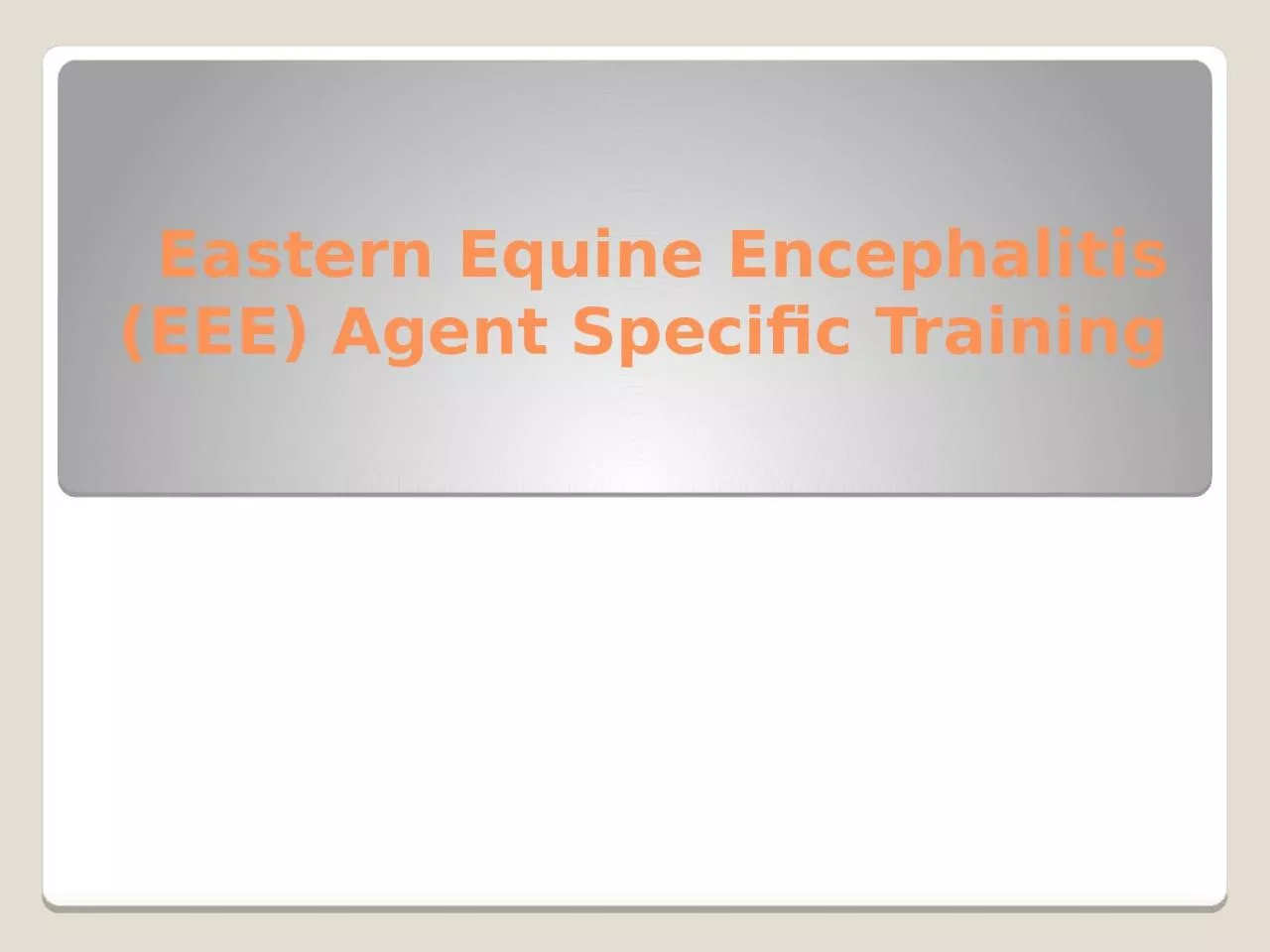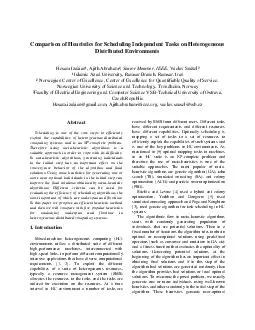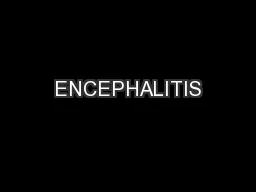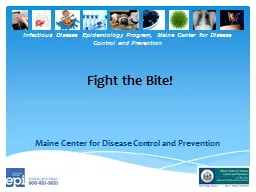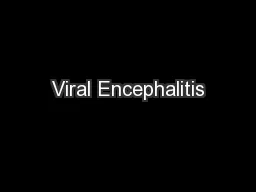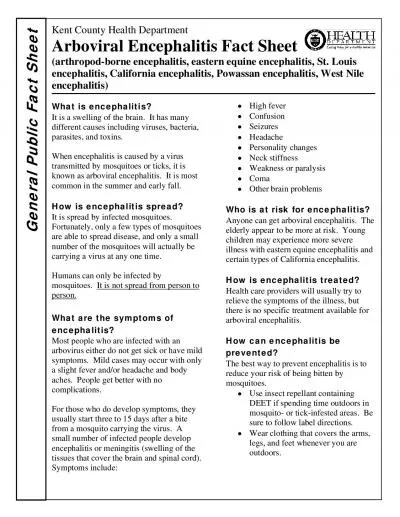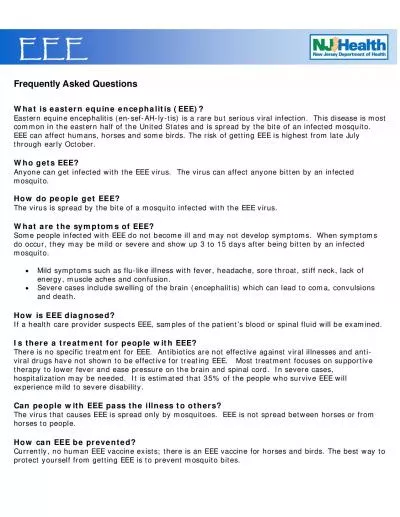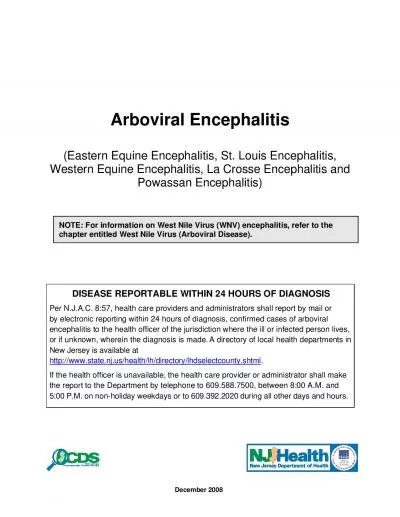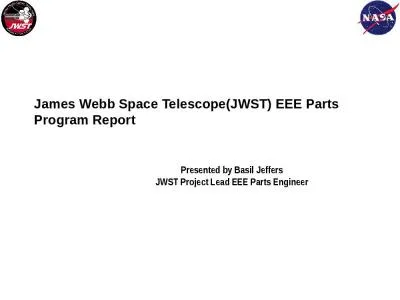PPT-Eastern Equine Encephalitis (EEE) Agent Specific Training
Author : anastasia | Published Date : 2022-06-11
Procedures Performed at NCSLPH Viral Isolation Sample inoculated into culture tube closed under BSC observed for CPE BSL2 If CPE indicative of EEE tube flask transferred
Presentation Embed Code
Download Presentation
Download Presentation The PPT/PDF document "Eastern Equine Encephalitis (EEE) Agent ..." is the property of its rightful owner. Permission is granted to download and print the materials on this website for personal, non-commercial use only, and to display it on your personal computer provided you do not modify the materials and that you retain all copyright notices contained in the materials. By downloading content from our website, you accept the terms of this agreement.
Eastern Equine Encephalitis (EEE) Agent Specific Training: Transcript
Download Rules Of Document
"Eastern Equine Encephalitis (EEE) Agent Specific Training"The content belongs to its owner. You may download and print it for personal use, without modification, and keep all copyright notices. By downloading, you agree to these terms.
Related Documents

